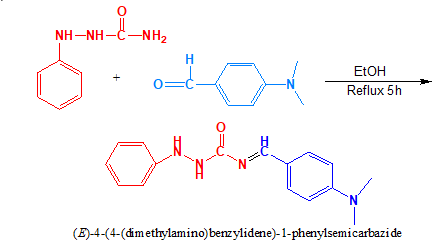Titanium Complex with New Schiff Base 4-(N, N-dimethylaminobenzylidene)-1- phenylsemicarbazide: Synthesis, Thermal, XRD, and Antibacterial properties
Keywords:
Schiff base, Ti (IV) complex, Thermal analysis, XRD, Antibacterial StudyAbstract
4-(N, N-dimethylaminobenzylidene) 1-phenylsemicarbazide Schiff base (SB) was synthesized from 1-phenylsemicarbazide and 4-(N,N-dimethylaminobenzaldehyde). Numerous analytical approaches, such as ele-mental analysis, 1HNMR, 13CNMR, electronic spectra, and FT-IR spectroscopy were utilized to analyze the newly synthesized Schiff base. The Ti (IV) Schiff base complex was produced, and its electrolytic nature, stability, and octahedral structural properties were determined by elemental, IR, UV-Vis spectral, conductivity, and thermal studies (TGA-DTA). From XRD results, the practical size of Schiff base and its complex were in the nano range with crystallinity structure. To evaluate the antibacterial activity, the free ligand and its complex were assessed in vitro against Pseudomonas aeruginosa, Escherichia coli, and Staphylococcus aureus. These results show that the metal complex has stronger antibacterial action than the Schiff base ligand.
Downloads

Published
How to Cite
Issue
Section
Copyright (c) 2024 Fathi M. Al-Azab, Yasmin M. S Jamil, Nedhal A. A. Al-Selwi, Ahmed N. Alhakimi, Dheya A. Hameed, Gamil M. S. Qasem, Abuzar Ebead Albadri Albadri

This work is licensed under a Creative Commons Attribution-NonCommercial-NoDerivatives 4.0 International License.
